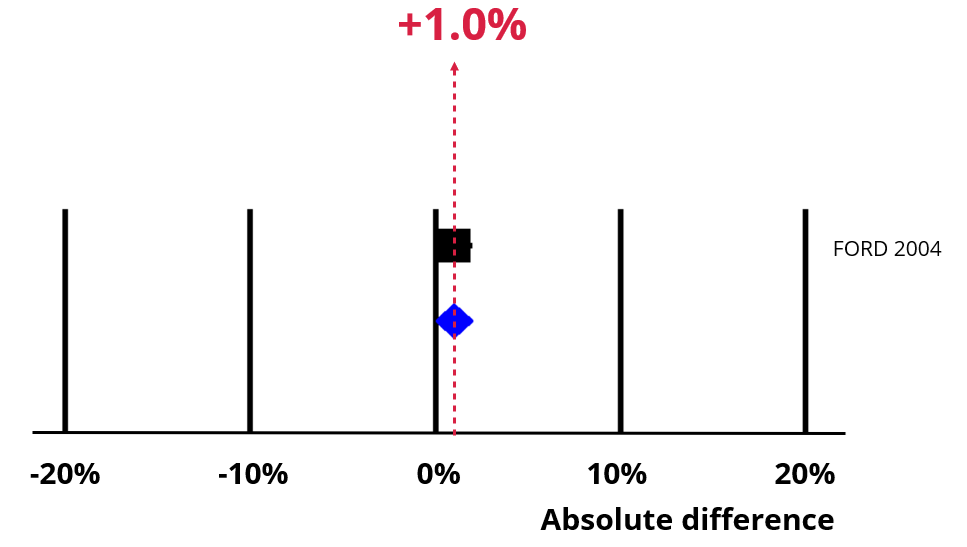Recruitment is organised either via telephone interviews, an enhanced mailed packet (one that is written by and includes the photograph of a prominent local community member) or during church-based project sessions.
Recruitment at a church and other enhancements may improve recruitment.
An increase of 1% (95% confidence interval = 0% to 2%).
GRADE Low certainty.
We recommend that trialists consider recruitment at churches and using other enhanced recruitment methods.
See Resource bundle below for details on how to recruit at churches and implement other recruitment enhancements.
Imagine a trial that needs to recruit 30 participants and initial recruitment is 30% of those approached. This means you’d need to approach 100 people to recruit 30 of them (see chart).

Now imagine using recruitment at church and other enhancements. The chart below shows the impact of an absolute increase of 1% (95% CI = 0% to 2%). Recruitment is now 31%, which means our best estimate is that 97 people would now need to be approached to recruit 30 of them.


